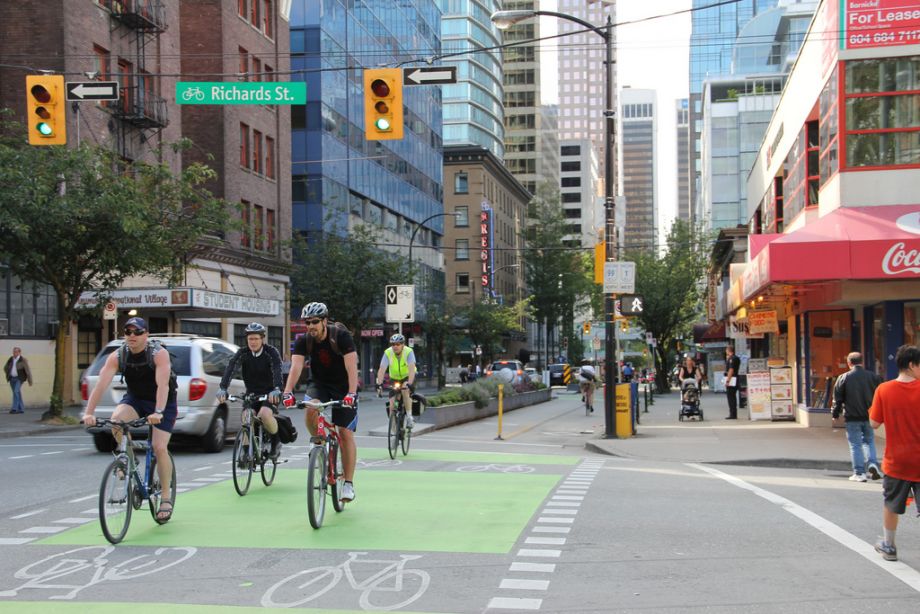As more cities prioritize not just protected bike lanes, but also keeping cyclists and cars separated through intersections, at least one group of researchers is hoping to make city hall planners’ design decisions more streamlined.
Portland State University’s TREC (Transportation Research and Education Center) is working to develop a set of best practices for protected bike lane intersections.
There are a number of options for intersection design, many of which are outlined in the National Association of City Transportation Officials’ Urban Bikeway Design Guide: bike boxes, which let bikes wait ahead of cars at the light, crossing markings that delineate the movement of bikes through the intersection, median refuge islands and more.
Right now, agencies are just using best judgment to choose among them, says Justin Carinci, TREC’s communications director.
“That can create a lot of confusion if it’s done different everywhere. And the more confusion there is, the less safe people are going to feel, and potentially the less safe they’re going to be,” he says.
Lead researcher Christopher Monsere of Portland State University plans to use data to help cities make the best choice for a given intersection, and to standardize those decisions across all such intersections. The first step, says Carinci, is identifying which design treatment to use in a given situation, based on factors like speed of traffic and number of turning vehicles. The second is to figure out the critical elements and dimensions of each treatment, so that every intersection of a given type is standard and predictable. The ultimate goal is a standard tool kit that could inform national design guidelines.
The research is being funded through TREC’s National Institute for Transportation and Communities’ pooled fund program, through which agencies can contribute relatively small amounts to help support critical studies. For this project, 11 partners, including the Portland Bureau of Transportation, the city of Cambridge, Massachusetts, and the SRAM Cycling Fund, each contributed between $5,000 and $50,000 toward the $250,000 cost.
These stakeholders approached TREC about jointly working on a solution to the intersection challenge; TREC put out a call to find the appropriate researchers. Carinci says this model allows agencies to see their issues addressed without footing the full bill themselves. TriMet, for example, Portland’s regional transit authority, wants to see that bus lanes are not negatively impacted by protected bike lanes. “By being part of the project they can have their voice heard on that and have their concerns addressed,” says Carinci.
Jen Kinney is a freelance writer and documentary photographer. Her work has also appeared in Philadelphia Magazine, High Country News online, and the Anchorage Press. She is currently a student of radio production at the Salt Institute of Documentary Studies. See her work at jakinney.com.
Follow Jen .(JavaScript must be enabled to view this email address)








_600_350_80_s_c1.jpg)







